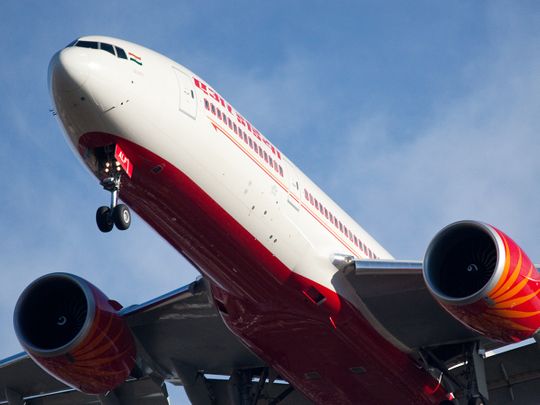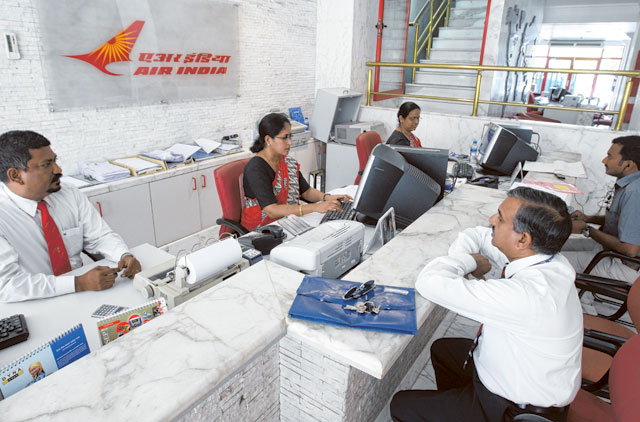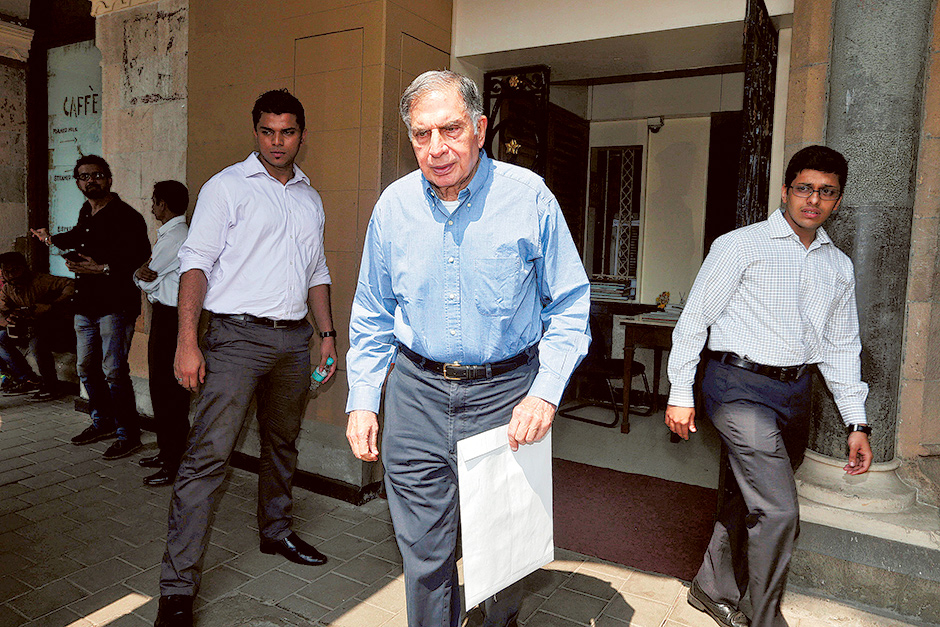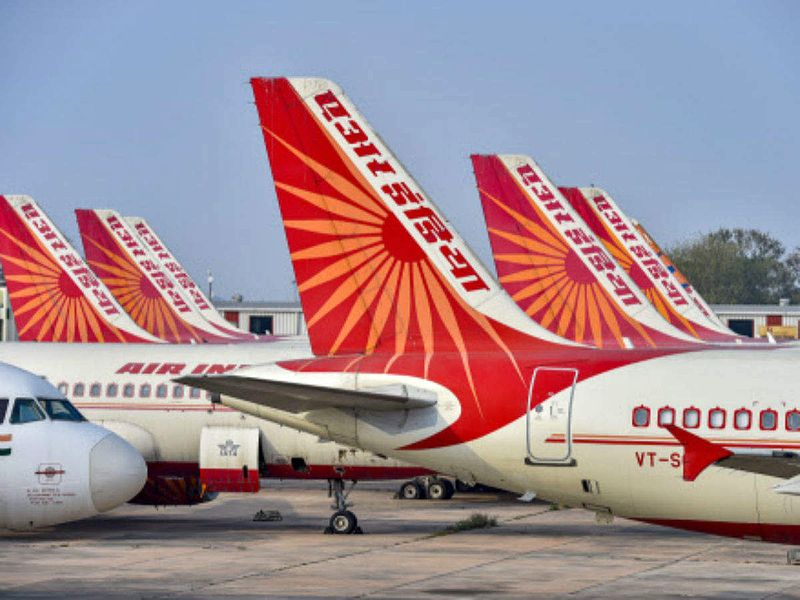
Dubai: Tata Sons’ successful $2.4 billion bid for debt-laden Air India is the first step in the conglomerate’s plans to become a major aviation player in the region.
Tata Sons will be the new owner of the national carrier, the government announced on Friday, finally bringing to end privatization efforts that began in 2018.
Air India, with a fleet of 117 aircraft, has around 1,500 pilots and 2,000 engineers. “Under Tata Sons, the carrier will be a formidable player - the takeover will be good for industry as the government will not have to keep pumping money into an airline burdened with debt,” said Ashwini Phadnis, a Delhi-based aviation journalist.
Under the terms of the agreement, Tata is expected to absorb 153 billion rupees (Dh7.48 billion) of the airline’s more than 615 billion rupees ($8.2 billion or Dh30.2 billion) debt burden. The excess amount in the bid, leftover after acquiring this debt, will be the amount payable by the company in cash, which is around Rs 27 billion (Dh1.32 billion). This debt amounts to 24.8 per cent of Air India’s total debt.
Tata’s ambitions do not just end here – reports have emerged stating that the company has been working on a plan to combine its joint venture with Singapore Airlines – Vistara – Air India, and AirAsia India.
“It makes little sense for them to have two full-service airlines compete with each other in their portfolio,” said Vinamra Longani, head of operations for Sarin & Co, an Indian law firm specializing in aircraft leasing and finance.
“Singapore Airlines and Tata together have wanted to jointly own Air India before and if they are able to convince SA to come on board in what shape and form it remains to be seen,” said Longani.
For now, the government is selling Tata 100 per cent of its stake in the state-owned national airline, including Air India’s 100 per cent shareholding in AI Express Ltd and 50 per cent in Air India SATS Airport Services Private Ltd.
“Should they decide to combine all these airlines into one entity, it is going to go down in history books as one of the most successful mergers in the aviation industry,” said Longani. “Knowing the Tata Group and their expertise, I’m sure they’d be able to pull it off but there are a lot of ifs and buts to this”

Better service
The change in management definitely bodes well for the millions of passengers that rely on the airline to make international trips.
“This means better in-flight offering - the cabins need refurbishing and the service needs to be brought to today’s standards,” said Longani. “All of that is going to change, and that’s definitely a plus for passengers and for the sector”
Long hard road
An initial sale attempt by the government in 2018 failed to attract any bidders. The successful sale of the loss-making national flag carrier is seen as a major government victory considering the burden on taxpayers.
The airline, which carried about 18 million domestic passengers in 2019, has suffered from overly bureaucratic management and political interference as privately owned low-cost carriers gained market share.
In fact, Ajay Singh, the head of one of India’s largest low-cost airlines was among the bidders for Air India. He had reportedly offered 151 billion rupees (Dh7.38 billion) in his private capacity to acquire the national carrier.
“I am confident that the Tata Group will restore the glory of Air India and make all of India proud,” said Singh in a statement. “I would also like to congratulate the government on the successful disinvestment of Air India - they ran a transparent and flexible process and gave new impetus to India’s disinvestment program”
“Except for attempting synergies at the back end, the companies should be given clear area to focus on and then permitted to flourish as independent brands,” said Chacko.
According to Chacko, this is how Tata’s portfolio could look like post the acquisition:
1) Air India: It will become a long-haul international carrier, competing with the likes of Emirates and British Airways. Vistara’s Boeing 787s will be folded into this fleet.
2) Air India Express: Air India’s low-cost unit will inherit Air Asia India’s routes and will compete in the domestic as well as international short-haul market with airlines such as Spicejet, Indigo, Air Arabia, and flydubai.
3) Vistara: It will be the main domestic airline and capture the full-service market with an all A320 fleet. Vistara, which will fly Air India’s domestic routes, will focus on consolidating the market once dominated by Jet Airways and Kingfisher Airlines.

Back to the parent
There is poetic justice in Tata Group ending up as the new owner. Air India, formerly known as Tata Airlines, was founded in 1932 by J.R.D. Tata. It changed its name to ‘Air India’ and became a public limited company in 1946.
The carrier was nationalized in 1953 but J.R.D. Tata would continue as chairman until 1977. It was all good while he was at the helm. Post-nationalization, the government held a 49 per cent stake in Air India, the public and Tata Sons owned the remaining 51 percent. However, Air India’s real decline began once J.R.D. Tata was fired from his role in 1978 by then Indian Prime Minister Morarji Desai.
After Tata’s exit, the airline was run by government-appointed bureaucrats who were not airline professionals, and were not commercially- or customer-focused.

Big merger fails
Most market spectators blame Air India’s decline on its merger with India Airlines, the government-owned domestic carrier. Although a transaction involving the two state-owned carriers made a lot of sense, the two companies were vastly different in terms of work culture, areas of operations and working conditions.
Indian Airlines, although quite successful at the start, merely offered a service without any additional conveniences for passengers. On the other hand, Air India, despite its decline, was still a highly-reputed international airline that competed with global majors.
The poor execution of the merger resulted in two cultures and unions that were at odds.
“Will it affect us? Of course it will affect us. But you know times change, you adapt and adjust. But this one is a bit of an outlier,” said Tim Clark, Emirates’ President in an interview with Moneycontrol. “They should have had a national carrier the size of Singapore Airlines or look at Emirates. Look at some of the big carriers like Lufthansa, Air France, KLM. But to do that you have to be liberal in your thinking. I accept competition,” said Clark.
In the past, Air India was the airline of choice for millions of Indians flying to global destinations like Dubai, London or New York. This was partly due to an all-Indian crew, availability of local food, and an overall familiarity factor.
However, this advantage was snatched from Air India with Emirates, Etihad and Qatar cracking the Indian hospitality code and being more consistent in terms of service.








